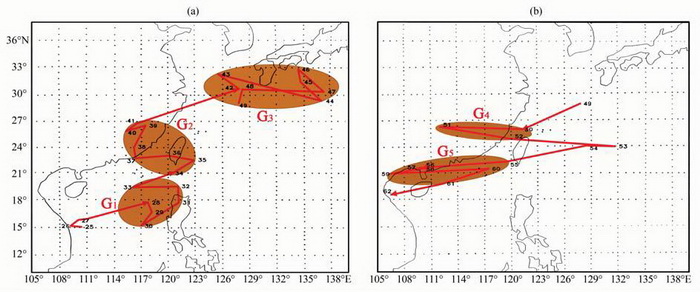Monsoon is a kind of climate phenomenon which changes the prevailing wind direction in a large area with the change of winter and summer seasons. To better know and understand the precipitation climate of East Asian Summer Monsoon (hereafter EASM) in the east parts of China in summer half year. In this research, the climatic linkages between both the position of the Subtropical High over the West Pacific (SHWP) and the EASM rainy-belts and –areas have been explored.
Scientists from CAREERI(Cold and Arid Regions Environmental and Engineering Research Institute) utilized the observed daily precipitation data in China for 1951-2005 and the US NCEP/NCAR reanalysis data for 1982-1994, and the secular pentad mean position figure for the West Ridge Point (WRP) of the SHWP and the pentad mean rainfall figures for many stations.
Main conclusions are as follows: (1) There are the closed relationship between the WRP position of the SHWP during the periods of both its relative stable stages and its east-or west-ward, abrupt and largely, moving ones and the EASM rainy-belts and-areas in east part of China in summer half year. On the average, in the northward advance period of the SHWP, if the WRP stay quiet steadily over off the northwest coast of Philippines, Taiwan Strait and its northwest side, and off the southwest coast of Japan, it will bring about pre-summer rainy period over South China (SC) in Pentads 28-33, the Meiyu one over the Changjiang and Huaihe Valley (CHV) in Pentads 35-40, and northern one in North China (NC), Northeast China and the northeast part of Northwest China (NWC) in Pentads 42-49, respectively; in the southward retreat period of the SHWP, once the WRP westward quickly extending to north parts of Taiwan Strait, Fujian and Jiangxi Provinces (off the coast of Guangdong and Guangxi Provinces), it will bring about the autumn rain over NWC (SWC) in Pentads 50-52 (55-61), respectively; If the WRP eastward, suddenly and largely, moving out of South China Sea in Pentads 27-28, the pre-summer rainy period in SCwill begin with mid-May. (2) Exploring the facts that the precipitation climate for both the Guangzhou-Hangzhou and the rest part in East parts of NWC are, mainly, influenced by the Meiyu and the Northern rainy periods, respectirely and so on. (3) Both the long sequence pentad mean rainfall figures and the pentad mean position ones of the WRP of SHWP are the important stool figures for the EASM precipitation analysis and forecast.
This research is financially supported by the National Natural Sciences Foundation of China, it has been published on the Journal of Plateau Meteorology, Vol. 32, No. 5, Oct. 2013, and the full text can be seen: http://gyqx.westgis.ac.cn/EN/abstract/abstract3417.shtml

Fig. Pentad means position of the west ridge point (WRP) of the subtropical high over west Pacific (SHWP) in 1982-1994. (a) north-and east-ward moving period of the SHWP (pentad 25-48), (b) south-and west-ward moving period of the SHWP (pentad 49-62). The red color fold line arrows show the WRP moving direction, the numbers on the sides of turning points, the pentad order, the orange color ellipse areas G1~G5, relative stable and centralized areas of the WRP of the SHWP

